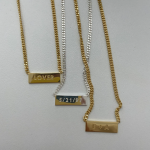
How to draw a head? A good head drawing is not a simple task, but it’s an essential part of any artist’s skill set, so putting the time and effort into teaching oneself is worth it. Because the head is such a complex structure, you should master a number of tips and tricks that will make it easier to understand. We’ll break them down for you in this guide.
Using different angles and shapes, artist Alex Woo shows you how to draw a realistic head on the first page. The second page of the book contains tips from portrait artist Oliver Sin that will help you learn to draw a head like a pro.
For more information on how to draw other parts of the body, see our article on the best how-to-draw tutorials. You can find the best pencils you can buy at the moment by checking out the best pencils you can buy. You can also read this page for Woo’s pro tips.
A Sphere as the Cranium
There are flat sides on both sides of the head, so you can cut off a piece of each side of the ball. From the profile, this plane will be a perfect circle. However, from any other angle, it will appear as an oval due to perspective. Dividing this oval into quadrants would be adequate. The horizontal line represents the jaw’s beginning. There is a horizontal line that represents the brow. You can find the hairline and the bottom of the nose by looking at the top and bottom of the oval.
The Jawbone and the Cheekbone form a Block
The jaw should be attached. The top of the face starts at the brow line, and the back begins at the center of the oval. This is a three-dimensional volume with a front, side, and bottom plane (the bottom plane can be seen from some angles).

Drawing a head: 8 Common Angles
There is an incredible amount of complexity in the head. I can’t process all of that complexity simultaneously, so I break it down into two simple shapes, which, for heads, are (1) a sphere for the cranium and (2) a pyramid for the nose.
You can set up the foundation for drawing a head at any angle by using these two basic shapes.
As an artist, you’ll encounter the following angles the most:
- Profile
- Straight on
- Up
- Up to three-quarters
- Down
- Three-quarters
- Down three-quarters
- Rear three-quarters
You’re going to use these angles over and over again, so it’s good to know them so well that you can apply them without thinking. It is possible to interpolate angles not covered in this chart by adding some in-between angles.
Make a note of these eight angles and begin to decompose them into simple shapes. Understanding a complex issue, problem, or object is easier when it is broken down into smaller, digestible parts. Knowing something by drawing it is one of the best ways to better comprehend it.
Profile
To draw a head from a profile, arrange your two basic shapes in such a way that they roughly resemble the angle you’re trying to achieve. As soon as you have a good sense of the relationships between the shapes, you can move on to building the rest of your drawing. In this and the following examples, you can see how the sphere and pyramid arrangement can help bind your drawings together.
Straight on
Straight-on is probably the angle we are most familiar with since it is the angle at which we usually see and interact with people in real life. You can still maintain the proper proportions and relationships by breaking the face down into the basic shapes of a sphere and pyramid.
Up
Since we rarely see people from this perspective, this is a difficult angle to visualize. Among the angles I had trouble with when I was a young artist, this was the most difficult. This angle, however, is more manageable when broken down into these two simple shapes. To see how they react when you turn them, glue a ball and a die together, and see if it helps you rotate the shapes in your head.
Up to three-quarters
The hero shot is often seen from this vantage point, and it is a very common angle. Among the things, you’ll see a lot of in comic books, paintings, and advertisements is silhouetting. There might be a benefit to mastering this angle early depending on what kind of stories you are telling.
Down
Even though this angle is not as common, it can nonetheless be beneficial in certain storytelling situations. Drawing a head from the down angle requires orienting the head correctly by first establishing the right position for the nose. You will then have a solid foundation from which to build the rest of your drawing.
Three-quarters
There is perhaps no more popular angle in film, portraiture, or illustration than this. Oftentimes, it’s the most flattering angle because it shows the most depth in a person’s face. First, you should learn this angle as well as the hero (up to three-quarters) angle.
Down three-quarters
This vantage point is less commonly used than the down angle, but it is still very helpful to know. Profiles are used less frequently than down angles. When you fill in the rest of the face, accurately locating the nose from this complicated angle will make all the difference.
Rear three-quarters
My rear three-quarters angle is the hardest for me now whereas the up angle was my hardest when I was younger. It never looks quite right no matter how hard I but thankfully, when this angle occurs, the person is usually not the focus of the image, but rather a compositional element. Nevertheless, it is advantageous to draw the head from this angle as many “over-the-shoulder shots” depict the head from this angle.





